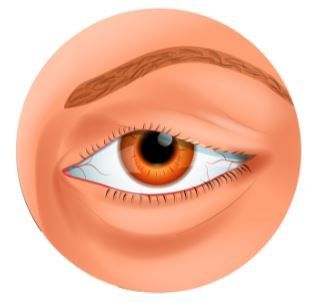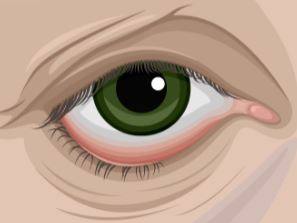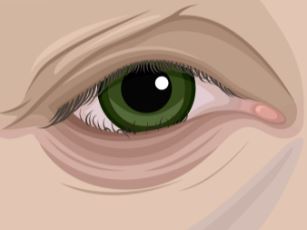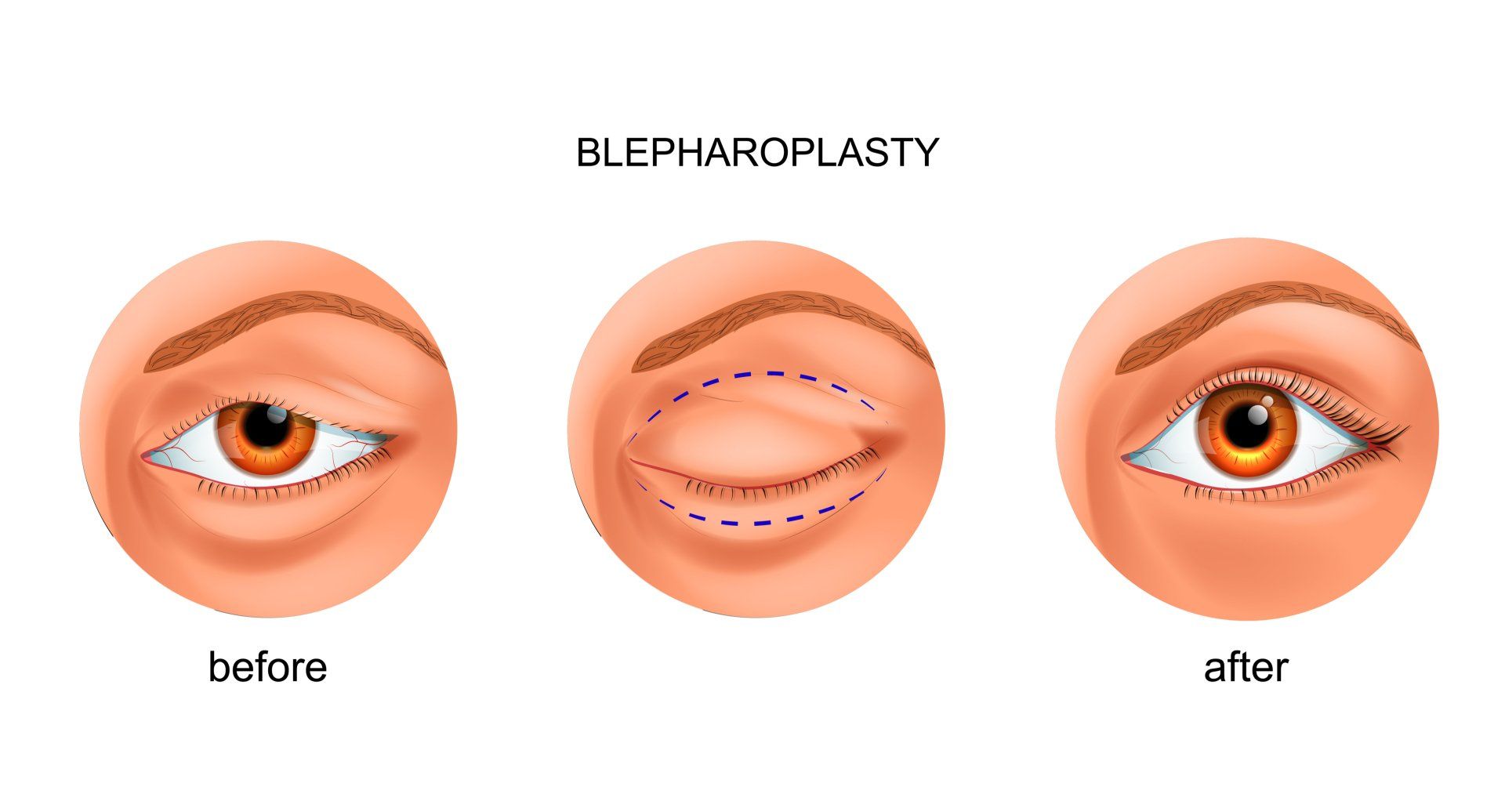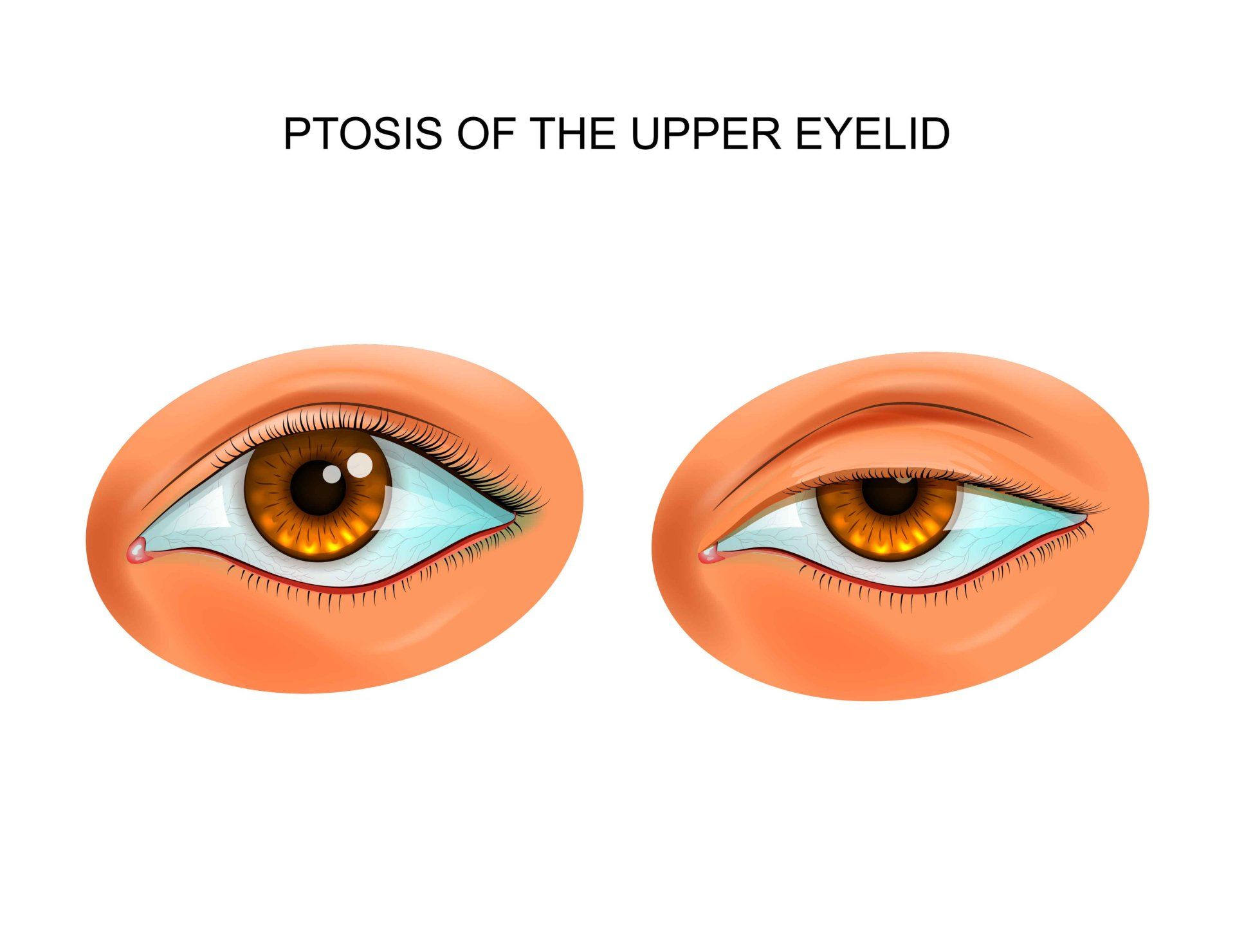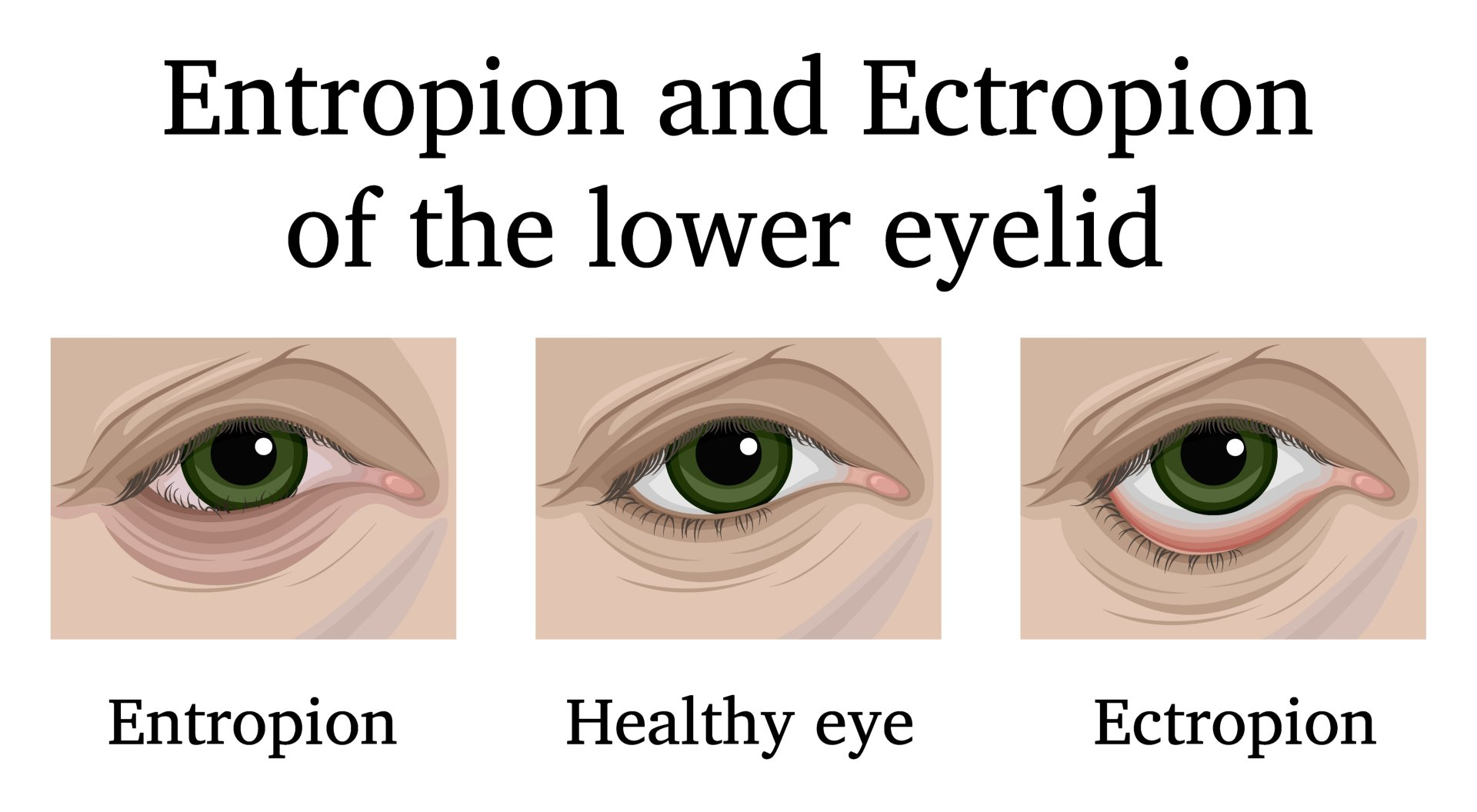Oculoplastic Surgery
Eyelid Treatments
Ectropion
Ectropion causes the lower eyelid to droop away from the eye, and sometimes jut outwards. This leaves the inner surface of the eye visible and exposed, which can leave it teary, sore and vulnerable to infection.
Ptosis
Ptosis causes the upper eyelids to droop, eventually interfering with the line of sight.
Entropion
Entropion causes the lower eyelid to turn inwards. This causes the eyelashes to brush against the surface of the eye making it teary, sore and vulnerable to infection.
Blepharoplasty
Blepharoplasty is a commonly performed operation to correct excess tissue around the upper or lower eyelids. Eyelid problems that can be corrected by blepharoplasty include heavy drooping skin, which may be unsightly or affect vision if drooping over the eye itself. Protrusion of eyelid fat causes the appearance of "bags" around the eyelids, and an ageing appearance. Blepharoplasty can help to reduce this effect by removing excess fat or repositioning it correctly, thereby rejuvenating the eyelids.
Upper lid blepharoplasty
In upper lid blepharoplasty, the surgeon will initially perform a thorough assessment of the amount of excess skin, muscle and fat present. The brow height and the eyelid height will also be measured to check whether there is brow or eyelid ptosis present, which may need to be corrected at the same time as blepharoplasty. The eyes will also be examined to ensure a healthy ocular surface prior to proceeding with surgery. Surgery is usually performed as a daycase, under local anaesthetic. A very fine incision is made in a natural skin crease of the upper lid, and excess skin and loose muscle trimmed. Protruding fat islands are identified and repositioned or trimmed as necessary. At this point it is possible to correct coexisting eyelid ptosis. The skin incision is closed with very fine dissolving sutures, and the eyes padded for a few hours.
Lower lid blepharoplasty
In the planning of lower lid blepharoplasty, the surgeon will check the amount of redundant skin, muscle and fat present in the lower lids. The amount of eyelid margin laxity and the integrity of the eyelid tendons attaching the eyelids to the bony orbit will also be assessed. Lower lid blepharoplasty is performed as a daycase under local anaesthesia. If there is minimal horizontal eyelid laxity and healthy eyelid canthal tendons, a fine incision is made under the lower lid lashes, extending slightly to the side of the eye. This is an incision which heals extremely well, with minimal long term scarring. From this incision, excess fat can be accessed, repositioned or trimmed to improve lower lid anatomy and appearance. A small amount of excess skin and muscle may need to be trimmed, and the horizontal eyelid laxity can be tightened, repairing weak tendons at the same time. If there is no excess skin and muscle, no horizontal eyelid laxity, and canthal tendons are intact, surgery can proceed from an incision on the inside surface of the lower lid (conjunctiva). After surgery, the eyelids are padded for a few hours.
After blepharoplasty surgery
Both upper and lower lid blepharoplasty surgery can lead to a significant amount of bruising in the days and weeks after surgery, and it is best to plan 2-3 weeks of downtime after your surgery. Cold compresses, as well as head elevation when lying down, will enhance healing and relieve discomfort.
Ptosis
Ptosis is a common eye condition, especially in older people, as age tends to weaken the delicate muscles around the eyes. Ptosis causes the upper eyelids to droop, eventually interfering with the line of sight. With time, patients have to raise their eyebrows or use their fingers to raise their eyelids to be able to see comfortably.
Symptoms
Ptosis causes a progressive difficulty in clearing the upper portion of the line of sight. This can cause inconvenience with daily activities, and tends to become worse towards the end of the day. Common activities such as reading in the evening can become difficult.
Causes
The most common cause of ptosis is an age-related weakening of the tendon of the muscle raising the upper eyelid. It can be exacerbated by mechanical causes such as contact lens wear and previous eye surgery.
The condition can also be caused by:
- A weakness of the upper eyelid muscle from birth.
- A weakness of the upper eyelid muscle due to another muscular or neurological cause.
Treatment
In most cases, surgery to repair the damaged eyelid tendon is required. This operation is performed under local anaesthetic, and takes about 45 minutes per eyelid. The eyelids can be operated in succession or on the same day. The procedure involves the use of small dissolvable sutures (stitches) in the upper eyelid, and the incision is hidden in a natural fold of skin. This usually means that there is very little visible scar once the eyelid has recovered from surgery.
Your eye will usually be padded until the next morning and you will be given eye drops and ointment to take for 2 weeks following the operation.
Ectropion
Ectropion is a common eye condition, especially in older people, as age tends to weaken the delicate muscles around the eyes. Ectropion causes the lower eyelid to droop away from the eye, and sometimes jut outwards. This leaves the inner surface of the eye visible and exposed, which can leave it teary, sore and vulnerable to infection.
Symptoms
The most common symptom of ectropion is a watery eye. The tear duct is a tiny passageway that drains tears from the surface of the eye to the back of the nose. An ectropion eyelid droops and turns outwards, taking the tear duct away from the surface of the eye. This prevents the tears from draining properly, and they build up inside the drooping eyelid causing the eyes to weep constantly. As tears cannot properly drain, bacteria cannot be cleaned away from the surface of the eye. This makes the eye particularly vulnerable to infection and irritation, which can cause redness, irritation and discharge.
Causes
The most common cause of ectropion is an age-related weakening of the muscles around the eyes, which can no longer support the eyelid in its normal position.
The condition can also be caused by:
- Injury or sun-damage to the skin around the eyes. This causes contraction of the skin of the eyelid, pulling it out of its normal position.
- Facial palsy. This is when the muscles of the face, including the muscles that control the eyelids, become paralysed or weak, due to temporary or permanent facial nerve injury.
- Eyelid lesions. The weight of some lumps and bumps around the eye may physically pull the eyelid out of its normal position.
Treatment
In most cases, ectropion can be relieved fairly simply. Surgery to tighten the skin and muscles that hold the lid in place is the most common and effective treatment. This is a minor operation, performed under local anaesthetic as day case surgery and usually takes about 40 minutes. The tightening procedure most often involves the use of small dissolvable sutures (stitches) at the outer corner of the eyelid and sometimes under the lashes of the lower eyelid.
Your eye will usually be padded for one day, and you will be given eye drops and ointment to take for 2 weeks following the operation.
Entropion
Entropion is a common eye condition, especially in older people, as age tends to weaken the delicate muscles around the eyes. Entropion causes the lower eyelid to turn inwards. This causes the eyelashes to brush against the surface of the eye making it teary, sore and vulnerable to infection.
Symptoms
The most common symptom of entropion is an irritated uncomfortable eye. As the eyelashes brush against the surface of the eye, they can abrade the cornea (clear window at the front of the eye). This can eventually causes infection and scarring.
Causes
The most common cause of entropion is an age-related weakening of the muscles around the eyes, which can no longer support the eyelid in its normal position.
The condition can also be caused by:
- Injury or inflammation to the inside lining of the eyelid. This causes contraction of the lining of the eyelid, pulling it inwards.
Treatment
In most cases, entropion can be relieved fairly simply. Surgery to tighten the skin and muscles that hold the lid in place is the most common and effective treatment. This is a minor operation, performed under local anaesthetic as day case surgery and usually takes about 40 minutes. The tightening procedure most often involves the use of small dissolvable sutures (stitches) at the outer corner of the eyelid and sometimes under the lashes of the lower eyelid.
Your eye will usually be padded for one day, and you will be given eye drops and ointment to take for 2 weeks following the operation.

